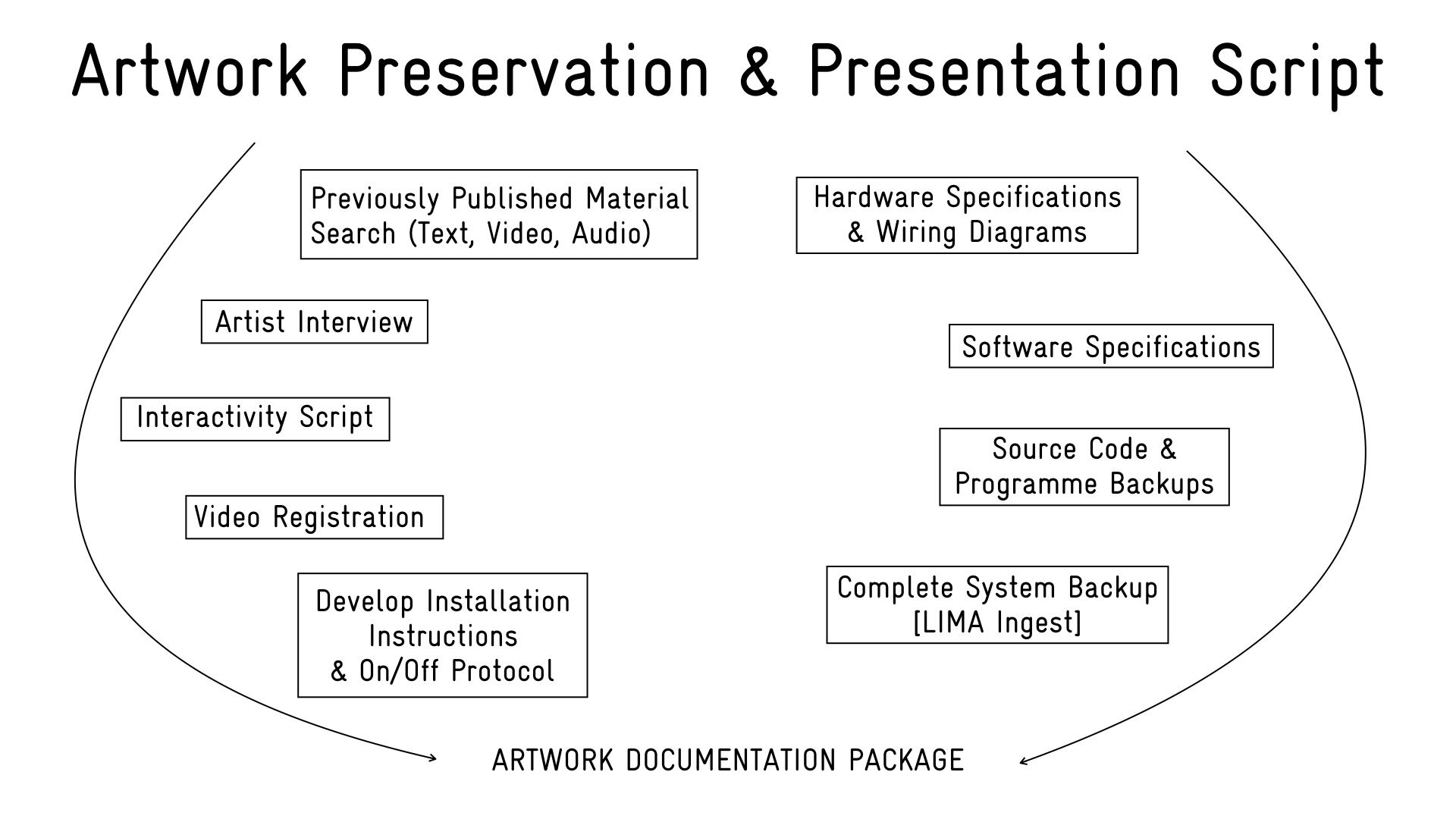Artwork Documentation Tool

Introducing the Artwork Documentation ToolDear Artists, if you'd like to be more in control of the future presentation of your artworks, this tool gives you guidelines to do just that. We know that documenting and preserving your work is not easily done, or is complicated by competing requirements of your time and resources. For these reasons and more, LIMA created this Artwork Documentation Tool to empower you and other artists to feel in control of documenting your own artworks so you'll be able to show them now and in the future. The tool is free to use and offers a series of steps and tasks to support you in gathering and documenting information about your artworks and also acts as a place to store this. The information you bring together will contribute greatly to your own personal knowledge of your practice and will also help you more easily offer your work for exhibition, acquisition and purchase to interested galleries, museums and collectors.The tool is geared towards artists who create complex, software-based installations (which could also be interactive). However, if you're an artist working with digital media in a performance or installation capacity, this tool could also be used by you. Just explore and answer what's relevant. The tool is open to artists who are in the process of creating new works, or who would like to go back and document older works. Thinking about how artists can be better empowered to preserve their own work is part of a legacy of people working through these issues and offering advice and tools to artists. The Variable Media Questionnaire and artist Rafael Lozano-Hemmer's 2015 manifesto provide invaluable insights, and significantly influenced LIMA's research and the Artwork Documentation Package we developed. LIMA's Artwork Documentation Tool is actually a simplified interpretation of this Artwork Documentation Package - we've taken a broad range of activities and actions that require a team to compete, and translated it into a simple format for you to use and do yourself. 
Here, we thought specifically about what you as an artist might need in order to be able to document and preserve your own works for presenting them now and in the future. So we've created an easy-to-use tool with a clear set of steps and related tasks. This is all housed and saved in your own personal account on the Artwork Documentation Tool platform, allowing you to start, stop and return so you can chip away at this documentation over time. The tool is free to use, and we've made the steps easy on costs, mainly just requiring time. The questions and tasks cover the minimum guidelines necessary for an artist to have a good documentation of their work. There could always be more steps and questions, but we've tried to condense this to the most important information. How to use the Artwork Documentation ToolTo use the tool you first setup a personal account with a login. Once created, you can document multiple works by starting a different documentation "set" for each artwork. All information is saved in your personal "portal", meaning you can begin and return to the documentation over time as you gather or record old and new information.There is basic information to fill out on the artwork and then 8 steps, each with a different focus:
You can of course do the steps in any order you choose, but we recommend trying to follow the order as they're offered in a way to help you protect your work and build the knowledge you have around it. Privacy InformationThe Artwork Documentation Tool provides the option of entering personal data and data about artworks. The user who inputs this data does so on an expressly voluntary basis. By submitting his or her email or postal address, the user agrees to receive the material and information requested from the Artwork Documentation Tool through email and/or mail. Furthermore, the user agrees that all data they input into the tool is stored and that further processing (supported by electronic data processing) of one's own data might be done. This information will not be shared with third parties, and will only be used by LIMA for reflection, contacting the user for feedback on the tool, to monitor the user's engagement with the tool, and to bring the user's attention to further LIMA services. Data shared by the user will be treated strictly confidential according to the regulations of the respective valid version of the data protection laws.© LIMA 2017. This work is licensed under a Creative Commons Attribution-NonCommercial 4.0 International License. Should you have any technical problems setting up for your account or using the tool, please contact artworkdocumentationtool@li-ma.nl So get going, set-up a personal account, and start documenting your artworks. This project is made possible with the support of Creative Industries Fund NL. 
|